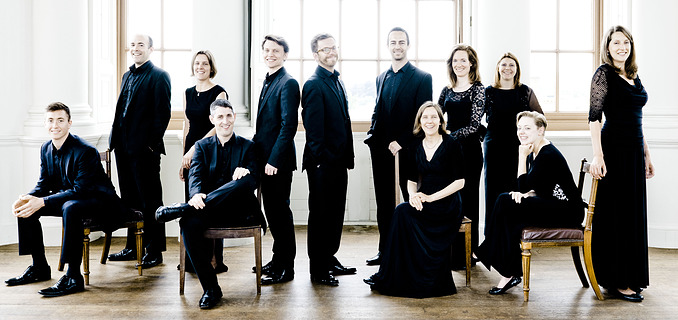The larger, Latin works are truly extraordinary and of a scale that looks back to the Eton Choirbook. Stile Antico bases its disc on three of these: the uplifting responsory Gaude, gaude, gaude Maria virgo, a Te Deum, and - forming a substantial centrepiece for the disc - the antiphon Media vita. The latter is Sheppard's masterpiece, an exquisitely carved work that Stile Antico performs with considerable poise and gravitas. With subtly-honed dynamic control, the mixed-voice group manages to convey an over-arching sense of uniformity to the piece - no mean feat for such a long, sectional work. Stile's weighty tempi do nothing to shorten it; at 25:32, the work is a full four minutes longer than the Tallis Scholars recording on Gimell and over six minutes longer than that of the Gabrieli Consort (DG).
It works, though. This isn't a performance to turn up to full volume and impress the neighbours with; Stile's account of Media vita is the most introverted to date - a lower pitch than some recordings adds lugubrious warmth in place of refreshing brightness, with intimacy replacing outward drama. Bearing this in mind, I would have occasionally liked a little more unreserved joyfulness in Gaude, gaude, gaude Maria virgo, for instance, though there were some lovely moments of clarity in the later sections that provide a breath of fresh air to the more substantial six-part counterpoint.
The English settings show Sheppard in a more restrained form, though rather less so than many of the English settings of Tallis and Byrd - you can almost hear him straining to escape from the boundaries of commonplace homophony at every opportunity. Particularly beautiful (and also beautifully sung) is The Lord's Prayer, in five parts, which should surely be performed more often than it is today. The three remaining anthems do not give Stile the chance to display its overarching sense of structure to such an impressive extent as in the Latin works; one of them, Haste thee, O God, is recorded here for the first time.
In the larger pieces, Stile Antico's sense of structure and direction is impressive in the extreme; this is a carefully thought-out, serious and intimate recording. The acoustics, of All Hallow's Church, Gospel Oak, London, are superb, and the ensemble uses different microphone positions for effective contrasts in several of the works.


 Back to List
Back to List